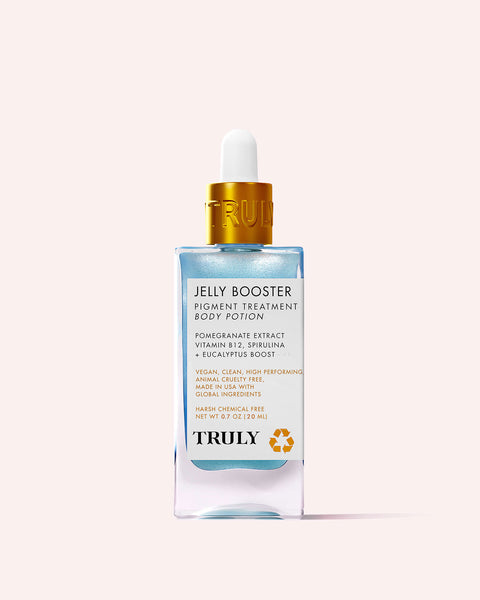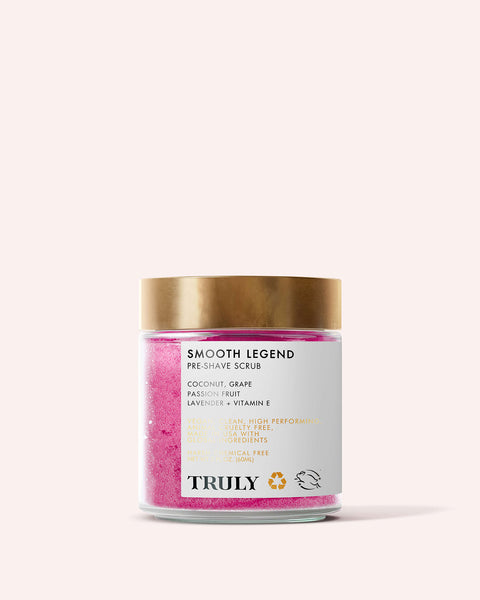How to Get Rid of Forehead Acne

We've gathered all the intel on how to get rid of forehead acne so you can get clear and smooth asap.
Forehead acne is pretty common and luckily, nothing to worry about. That said, it can be extremely frustrating, especially if you're already following a rigid skincare regimen. What are you doing wrong? It could be anything from using the wrong skincare products to tight accessories or even certain hair products.
Here's everything you need to know about acne on your forehead, and the best treatments.
What Causes Acne in Forehead?
Before you find out how to get rid of forehead acne, it's a good idea to know the culprits. Forehead acne typically looks like red bumps known as papules. Sometimes, they appear with a collection of pus at the top. These are known as pustules.
There are many causes of forehead acne. Most likely what's causing yours is clogged pores – something that happens when dead skin cells and bacteria over-accumulate on your skin.
Stress, hormonal changes, and medication can all cause forehead acne. Alongside this, using irritating skincare products or not washing your face regularly can result in clogged pores and ultimately blemishes. Even heavy moisturizers can clog pores and lead to breakouts.
Then there's friction-related acne which can be caused by head accessories like hats and headbands. When these rub against your skin, it can result in tiny red bumps on your forehead.
Types of Forehead Acne
And the most common types of acne to appear on the forehead?
Milia
It’s not technically acne, but it looks a lot like it. And the majority of times, it takes shape on the forehead. Whereas acne forms as a result of excess oils and dead skin cells clogging pores, milia happens when keratin gets trapped under the surface of the skin.
Comedones
These small bumps are often known as blackheads and whiteheads.
“Acne comes in many flavors, and the type of acne you see depends on the person’s ability to produce oil,” says dermatologist Dr Purvisha Patel. “Usually the type seen on the forehead is caused by occluded pores, so more whiteheads are seen there.”
Papules
Forehead acne can also appear as raised red bumps – known as inflammatory papules. This type of acne is also common on the forehead.
“Other causes include inflammatory skin conditions such as rosacea and dermatitis and many possible small benign skin lesions such as milial cysts, sebaceous hyperplasia and seborrhoeic keratosis,” explains dermatologist Dr Clara McDonald.
How to Get Rid of Forehead Acne
1. Cleanse to Unclog Pores
24k Gold Black Soap Cleanser
SHOP NOW
Dirty skin isn’t always associated with acne, but keeping your skin clean can help prevent pimples. Especially if your forehead acne’s being caused by excess oil produced by the sebaceous glands.
This additional oil, which is sent through the pores to hydrate the skin, can often end up getting clogged when trying to reach the skin’s surface. Thus, creating the perfect opportunity for acne-causing bacteria to take over your skin.
You should also be keeping your skin clean after workouts, as sweat can be a major contributor to acne. If you don’t have access to a sink at your gym, use a facial wipe to wipe off your sweat.
2. Exfoliate to Smooth Your Forehead
Seeing that most forehead acne is caused by dead skin cells, it’s a good idea to slough away those unwanted cells with a good ‘ole exfoliator. In fact, exfoliation is one of the best steps when it comes to how to get rid of forehead acne.
“Between repeated applications of sunscreen, makeup, and sweat, it’s essential to exfoliate your skin to make sure you’re getting everything off your face at the end of the day — or dirt and grime gets trapped in your pores,” says dermatologist Dr Francesca Fusco.
On the other hand, don’t overdo it with the exfoliating, as it can leave your skin feeling irritated. Aim for 2-3 times a week to keep your skin looking smooth. Less if you have sensitive skin.
3. Re-Think What You’re Putting in Your Hair
And by that, we mean everything from your hair products to your hair accessories. Essentially anything oily or sticky that could be causing your breakouts.
Hair products like leave-in conditioners and pomades can sometimes worsen acne. If you use any of these products and you’re getting forehead breakouts, try taking a break from them to check if they’re really the culprits. The same goes for hair accessories like headbands and baseball caps.
4. Moisturize to Prevent Excess Oil Production
Glazed Donut Facial Glow Cream
SHOP NOW
The easiest way to tell your body to stop producing more oil is to apply oil – or any kind of moisturizing product for that matter. By keeping your skin hydrated, you’re signalling to your skin that it has adequate oils, preventing it from producing more. When your skin is dehydrated, the body creates more oil to make up for the loss, often resulting in increased breakouts.
5. Change Your Pillowcase to Prevent Bacteria Transfer
Think about it. Your face touches your pillowcase every night for several hours each night. That’s a lot of contact! Now think about when you last changed your pillowcases… did you just say a month ago or worse, “I can’t remember.”?
That’s all the evidence we need to tell you to change your pillowcase right away.
“The bacteria and oils from our hair and mouth transfer onto our pillowcases and then our faces during the night — becoming another source of acne,” says Dr Rachel Nazarian.
Keep your pillowcase clean by changing them at least twice weekly. It might not be the only solution for how to get rid of forehead acne, but it can definitely help.
6. Chill Out
Easier said than done – we know. But seriously, stress and acne go hand in hand.
In 2002, a study from Stanford University found that college students experienced acne flare-ups during exams – a highly stressful period in their lives – compared to times without exams. This proves that stress has a direct impact on acne.
What Products Help With Forehead Acne?
If you're wondering how to get rid of forehead acne quickly, one of the best things you can do is use acne-fighting products. Here are the best forehead acne skincare products.
Glass Skin Set
SHOP NOW
The Glass Skin Set features a cleansing balm and serum formulated with jojoba oil, niacinamide, and probiotics to refine pores, clear skin, and combat blemishes.
#Heart Your Imperfections Blemish Patches
SHOP NOW
Patch up your stubborn forehead breakouts with these hydrocolloid-infused acne patches. It's the quickest fix for last pesky pimples.
Starface Jelly Sleep Mask
SHOP NOW
Clear away forehead blemishes overnight with this resurfacing sleep face mask. It's powered by retinol, vitamin C, and AHAs to remove dead skin cells, unclog pores, and speed cellular turnover for visibly clearer skin. It's a super easy way to treat forehead pimples.
How Long Does it Take for Forehead Acne to Go Away?
Generally speaking, if you're using the right treatments, it can take as little as 1-2 weeks before you notice your forehead acne clearing up. However, it can take up to six weeks.
Now you know how to get rid of forehead acne, you should only be a couple of weeks away from clear skin.













